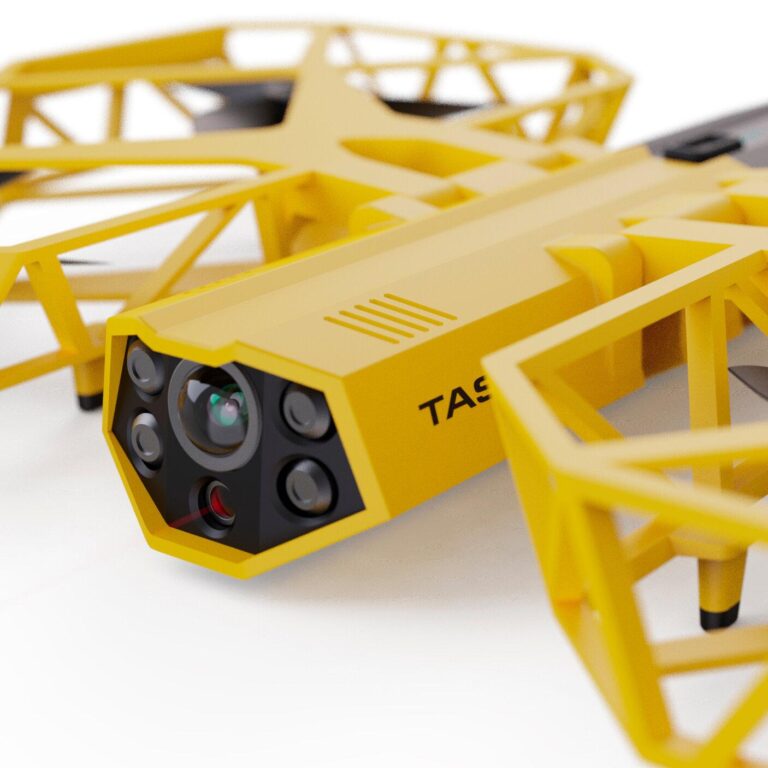Table of Contents
- Understanding the Electrical Mechanisms Behind Stun Gun Safety
- Material Selection and Design Features That Prevent Fatal Injuries
- Regulatory Standards and Testing Protocols for Non-Lethal Devices
- Best Practices for Manufacturers to Enhance User Safety and Device Reliability
- To Conclude
Understanding the Electrical Mechanisms Behind Stun Gun Safety
At the core of every stun gun’s design lies a sophisticated electrical system engineered to incapacitate without causing lasting harm. These devices generate a high-voltage, low-amperage current, which is crucial for their non-lethal function. Unlike firearms or blunt weapons, stun guns deliver an electric shock that temporarily disrupts the body’s neuromuscular control through rapid bursts of electricity. This carefully regulated pulse overloads the target’s nervous system, leading to temporary immobilization without penetrating the skin or causing deep tissue damage. Advanced circuitry within the device continually monitors and modulates the voltage output to maintain this delicate balance between effectiveness and safety.
Key electrical features contributing to stun gun safety include:
- Current Limiting: Restricts the amperage to levels that prevent cardiac and respiratory arrest.
- Pulse Control: Sends rapid, short-duration electric pulses rather than a continuous shock, reducing the risk of burns or prolonged muscle spasm.
- High-Voltage, Low-Current Delivery: Ensures the device can incapacitate by targeting the nervous system without passing enough current to damage vital organs.
Material Selection and Design Features That Prevent Fatal Injuries
Stun guns are meticulously crafted using specialized materials to optimize safety and functionality. The outer casing commonly employs high-impact, durable polymers that are both lightweight and resistant to shock and heat. This choice of material not only ensures the device withstands rough handling but also minimizes injury risks by insulating the electrical components securely. Internally, the electrodes and circuitry are designed from alloys that deliver controlled, precise electrical discharges, reducing the chance of dangerous amperage spikes. The components are strategically spaced and shielded to prevent accidental short circuits or excessive current flow, which could lead to fatal outcomes.
Design innovations also play a crucial role in ensuring non-lethality. Manufacturers integrate voltage regulators and automatic cutoff mechanisms that cap the energy output based on extensive biometric research. These features tailor the shock duration and intensity to incapacitate without causing permanent harm. Additionally, ergonomic design elements like grip texture, shape, and size help users maintain control during deployment, minimizing misuse. Some models further incorporate safety locks and activation buttons to avoid accidental discharges, emphasizing a balance between effective incapacitation and preventing fatal incidents.
- Durable, insulated polymer casings for shock resistance and safety
- Controlled electrical output through advanced circuitry
- Voltage regulators and cutoff mechanisms for non-lethal energy thresholds
- Ergonomic grips and safety locks for secure handling and accidental prevention
Regulatory Standards and Testing Protocols for Non-Lethal Devices
Ensuring the safety and effectiveness of stun guns involves adhering to stringent regulatory frameworks established by both national and international authorities. These devices must comply with standards that limit voltage, current, and pulse duration to minimize the risk of lasting injury. Agencies such as the U.S. Food and Drug Administration (FDA) and the European Committee for Standardization (CEN) require manufacturers to conduct thorough assessments, including electrical output testing and durability evaluations. Such mandates are critical to maintaining non-lethality while providing sufficient incapacitating power in real-world scenarios.
Testing protocols emphasize a combination of laboratory simulations and live scenario trials, ensuring that each stun gun performs consistently and safely under various conditions. Key characteristics monitored during these tests include:
- Electrical discharge patterns to confirm predictable incapacitation.
- Battery reliability to guarantee performance when needed.
- Ergonomic design and safety mechanisms preventing accidental discharge.
- Compliance with international safety benchmarks such as IEC 60335 or EN standards.
Best Practices for Manufacturers to Enhance User Safety and Device Reliability
Manufacturers prioritizing user safety and device reliability invest heavily in precise engineering and rigorous testing protocols. Utilizing advanced circuit design, these devices regulate energy output to deliver a controlled electric shock that incapacitates temporarily without causing permanent harm. High-grade insulating materials and robust casing structures ensure that the stun guns remain impervious to environmental factors and accidental damages, thereby maintaining consistent performance in critical moments. Additionally, incorporating real-time diagnostics enables the device to self-monitor functionality and alert users of any malfunctions or low battery levels, preventing unexpected failures.
Beyond component quality, ensuring safety extends into the manufacturing process and post-production standards. Best practices include:
- Comprehensive quality assurance: Multi-stage inspections to detect any defects before the product reaches consumers.
- Compliance with international safety certifications: Aligning devices with the strict guidelines set forth by regulatory bodies.
- Ergonomic design elements: Facilitating secure grip and intuitive operation to reduce misuse.
- Clear labeling and user instructions: Educating users on proper handling, maintenance, and potential risks to foster responsible usage.
To Conclude
In understanding how stun guns are engineered to ensure non-lethality, it becomes clear that a combination of careful design, advanced technology, and rigorous safety standards work together to provide effective self-defense without excessive harm. These devices are meticulously crafted to deliver just enough electrical charge to temporarily incapacitate an assailant, while minimizing the risk of lasting injury. As technology continues to evolve, so too will the precision and reliability of stun guns, reinforcing their role as responsible tools for personal safety. Whether you’re considering a stun gun for protection or simply interested in the science behind non-lethal defense, appreciating the engineering principles at play offers valuable insight into this critical aspect of modern security.Check Our Other Blogs
- StunGun – Your Trusted Source for Stun Guns, Laws, and Self-Defense Tips
- PepperSprayLaws – Your Trusted Resource for Pepper Spray Information
- StunGunLaws – Your Trusted Guide to Stun Gun Legality and Safety





